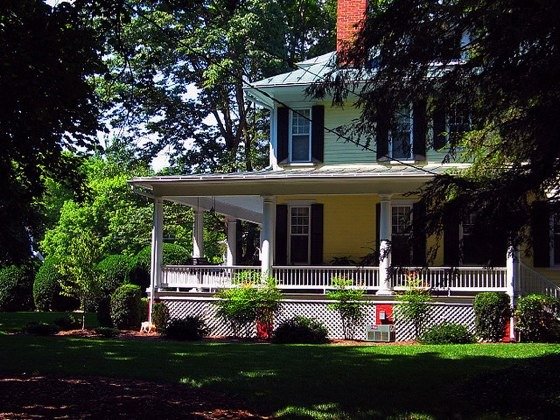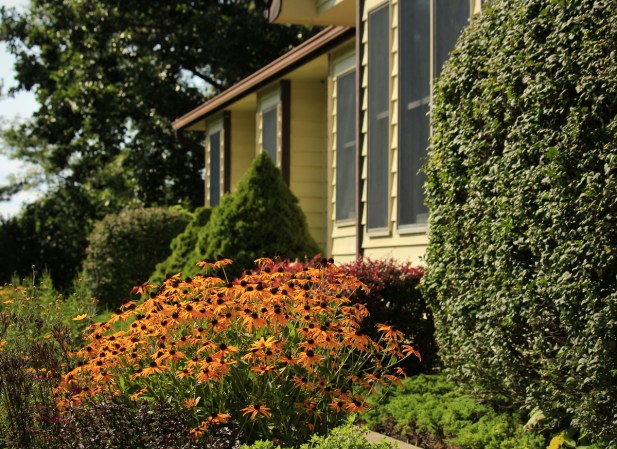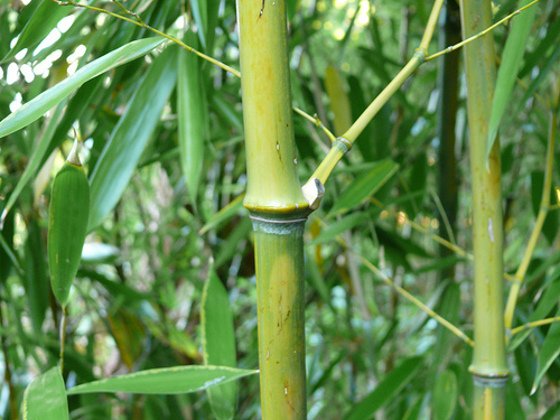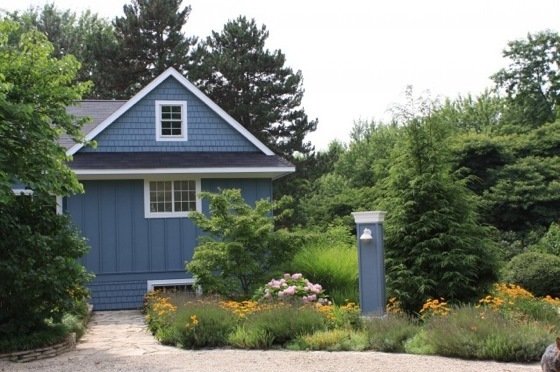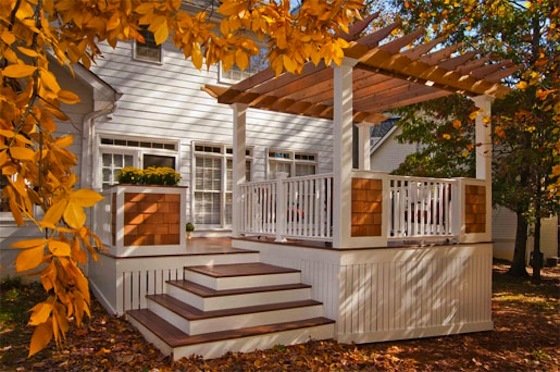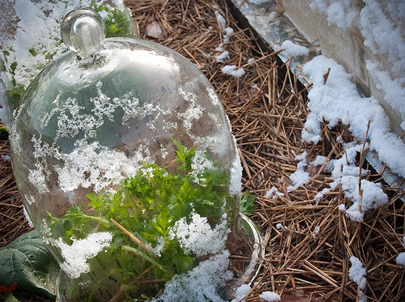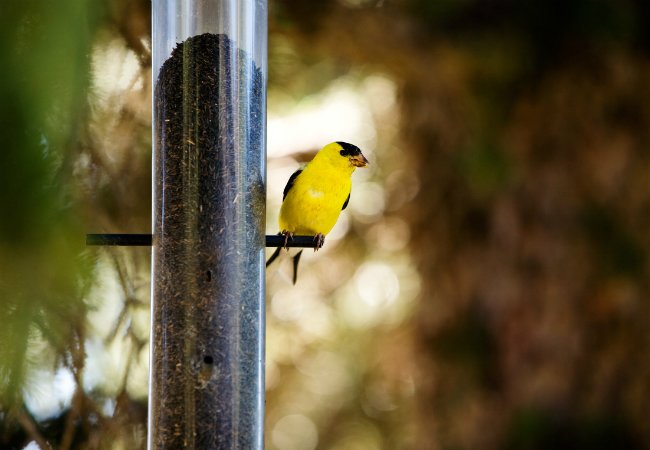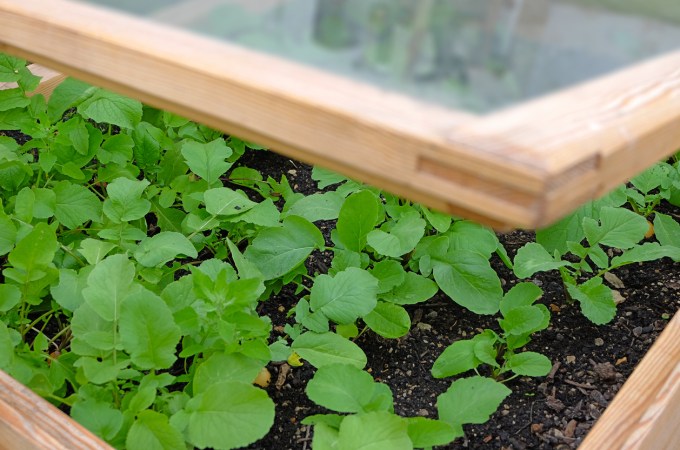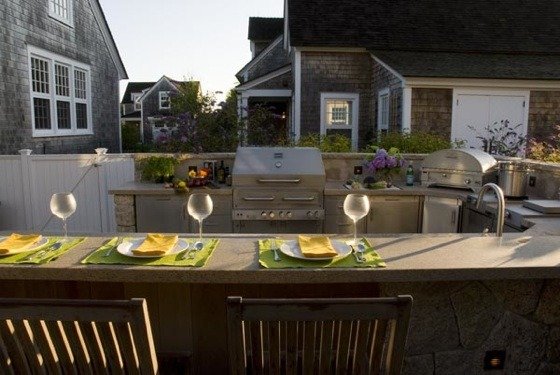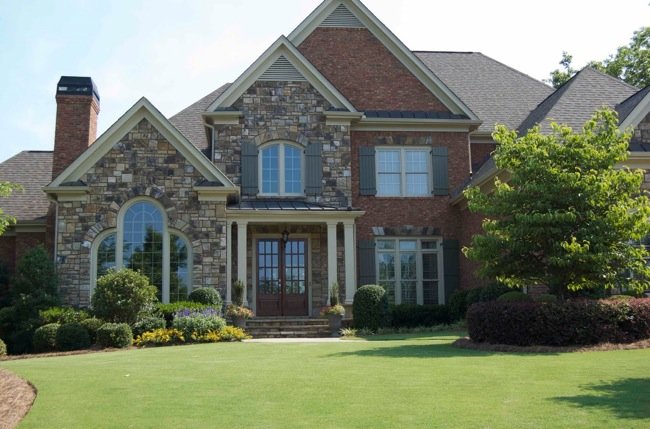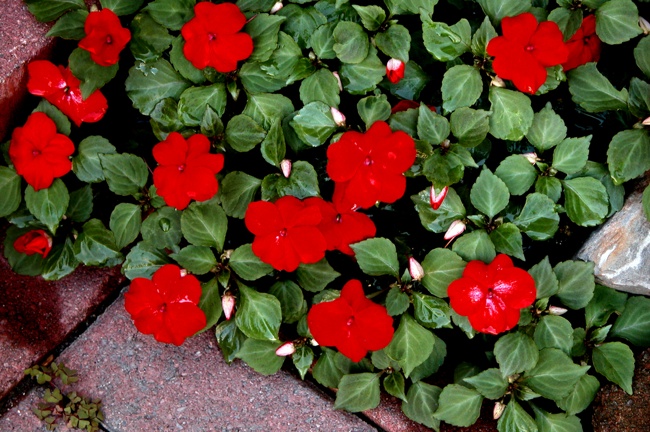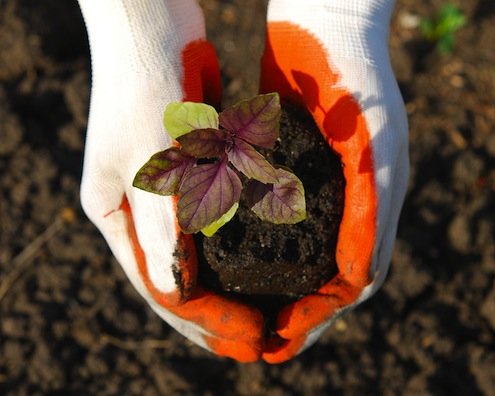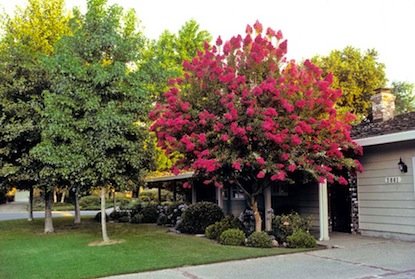We may earn revenue from the products available on this page and participate in affiliate programs. Learn More ›
Smart landscaping is more than a pretty yard—it’s a smart and efficient way to cool your home in summer.
Trees shade roofs from the hot summer sun. Shrubs and vines can be planted to keep walls cool. Shading your air conditioner can reduce energy costs by as much as 50 percent. These are just some of the ways that thoughtful landscaping can work to keep you cooler and save you energy dollars.
Beat Heat Buildup
Energy efficient landscaping requires an understanding of how heat is exchanged within your home. Windows take in the sun’s radiant heat. Roofs—especially dark ones—absorb heat. Walls, windows, and glass doors bring in hot outdoor temperatures through conduction (exchanging hot air for cool) or infiltration. Shading your property with trees and shrubs slows the heat exchange because it cools outside surfaces.
Observe how wind, sun, and shade work with your home at varying times of day and during different seasons. The best landscaping works to cool your home in the summer and retain heat in the winter. When checking the parts of your house that receive hot afternoon sun, record the angle of direct sunlight and which faces receive reflected sunlight. Choose trees and plants that allow a cooling nighttime breeze to enter open windows. A qualified landscape architect can help you site and plant species for optimal energy efficiency.
Make Shade
A tree’s growth rate, and the shape and density of its canopy determine its shade value and potential energy savings. A fast-growing tree offers shade in fewer years but will probably be less hardy than its slow-growing counterpart. Look for trees that produce a dense canopy with multi-directional branches and light-colored, smooth leaves. Gauge planting by the size of the tree at full maturity and the size of its root system. Planting too close to the house might not give roots the space they need and could damage the home’s foundation. Tall, mature trees with broad canopies are generally best for the south side, as they will shade the roof.
Plant shorter trees or tall shrubs along the west side of the house. These will help deflect late afternoon sun away from the walls. Don’t overlook lower-lying shrubs that can cool the ground around your home. Add ivy to the south or west wall of a brick or stone house, or train it to grow on vertical trellises alongside the building’s exterior. Create a natural awning by attaching a horizontal trellis to two vertical trellises to facilitate growth of ivy or flowering vines both upward and overhead.
Don’t leave your air conditioner baking in the hot summer sun—it will only have to work harder to cool your home. Create a buffer by erecting trellises along the south, east, and west sides of the air conditioner or situate it under a shade canopy. Planting shrubs alongside the air conditioning unit automatically increases its efficiency by 10 percent. When shading air conditioners, be sure to keep air intakes and filters open and free of obstructions.
Cooling Breezes
The same tree that provides shade during a hot summer day will usher in cool breezes at night. Since air moves fastest in the area beneath the lowest branch and the ground, prune lower branches to circulate air toward windows. Shrubs planted underneath windows channel wind upward and into first-story windows when working in tandem with a nearby shade tree. Leave a bit of space between the shrubbery and the home, as this will prevent moisture buildup if humidity is a problem. Create southwesterly breezes by planting evergreens along the northeast corner of a home to channel and redirect southerly winds. If you live in the north where winter winds can be brutal, make certain that the landscaping you choose will survive harsh wind, sun, rain, and snow.
